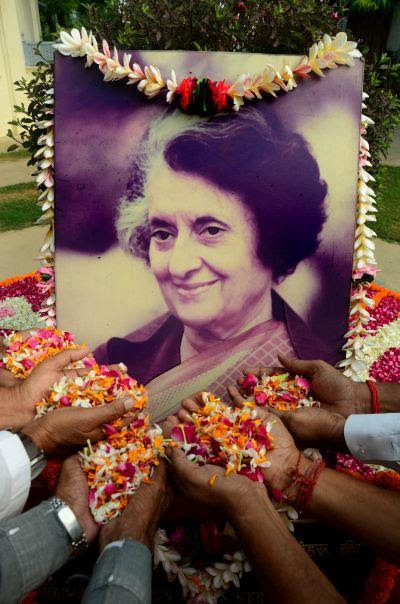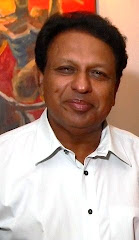Countering another string of pearls

Photo: AP
MILITARY COUP TO DEMOCRACY: The timing of Prime Minister Narendra Modi’s
visit to Fiji is appropriate as racial harmony and non-discrimination,
which India had wished for Fiji, have been accomplished. Picture shows
Fijian Prime Minister Frank Bainimarama waiting to cast his vote in the
2006 election before he seized power.
Political and protocol challengeThe arrival this week of the leaders of the two giants of Asia, India and China, who have also invited a dozen South Pacific leaders to meet them there, will be an unprecedented political and protocol challenge to Fiji. As a popular tourist destination, Fiji has enough luxury rooms to cater to the unusual group of diplomats in sartorial elegance, as against the tourists in bermudas and bula shirts and Fijians in Scottish kilts. But the political fallout of the visit will extend the tensions in the Asia Pacific to its southern corner.
Fiji was the first among the island states of the region to taste political upheavals, first on attaining independence from the British and then when the political compact between the native Fijians and the immigrant Fiji Indians collapsed on account of the first military coup in the region by Sitiveni Rabuka in 1987. India, in a reversal of its traditional policy of non-interference in such situations, fought for the rights of the Fiji Indians through economic sanctions and promoted their cause in the Commonwealth and the United Nations. By standing by Fiji Indians at a time of crisis, India sent a strong signal of solidarity to the Indian communities abroad. In the short term, the Fijians were concerned, but it dawned on them that it was the Indian position that led to the eventual return of democracy in the elections of 2014.
Although the present Prime Minister of Fiji, Rear Admiral (Rtd) Frank Bainimarama, first took power through a military coup, he concentrated on building communal harmony and creating a constitution devoid of the race-based electoral rolls, which was devised by the British. The abolition of the unelected Council of Chiefs removed the last vestiges of feudalism in Fiji. The moderates among the Fijians and the Fiji Indians supported him, leading to the removal of the racial divide in Fiji politics.
His Fiji First Party won an impressive victory even though the Social Democratic Liberal Party of the native Fijians and the National Federation Party, the traditional Fiji Indian Party, won some seats. Mr. Bainimarama had visited India twice to raise confidence among the Fiji Indians. As a nationally elected Prime Minister, he has no reason to be prejudiced against Indian influence in Fiji. His own senior advisers include Indian professionals and politicians such as Attorney General Aiyaz Sayed-Khaiyum.
India is certainly at an advantage in its bid to retain influence in the region, even as China is making sustained efforts to woo Fiji and the other islands in the South Pacific. In fact, India had no competitors in Fiji, as Pakistan had no presence and China had maintained only a token presence in the island country. China was focussed on seeking recognition from the islands, many of which had diplomatic relations with Taiwan. Having won that battle after many of them adopted the ‘One China’ policy, China has proceeded to befriend them with trade and economic linkages. The Chinese now have a firm foothold in the South Pacific, but with the kind of soft power it enjoys in the region, India can resist the expansion of Chinese influence in the South Pacific.
Relations with other islandsApart from Fiji, Tonga, Vanuatu and Nauru have cordial relations with India, while Papua New Guinea, Solomon Islands, Kiribati and others have warm feelings for India. The Indian brand is known in these islands mainly because of the Fiji Indian traders and businessmen. Nauru depends on India for teachers and administrators and had invested in the Paradeep Phosphates as part of its strategy to invest abroad in the context of its dwindling land. Tonga had a king who had a special relationship with Indian leaders and who had visited India. Vanuatu felt close to India because of its socialist dreams. At one time Australia had some apprehensions about the expansion of the Indian Navy in the Indian Ocean, but it doesn’t resent Indian influence in these islands now.
Unlike Japan and Vietnam, Australia has no major problems with China, and their commercial and economic relations are significant. This is a factor which will have an impact on the attitude of the South Pacific towards China. But the human rights violations in China, which Australia resents, must be a concern for the smaller state too. The only factor that weighs in favour of China in the region will be the massive investments that it promises to make in return for a market and strategic space in the South Pacific.
The visit of the Indian Prime Minister to Fiji comes 33 years after Indira Gandhi’s visit. But the timing of Narendra Modi’s visit is most appropriate because racial harmony and non-discrimination, both of which India had wished for Fiji, have just been accomplished. But the visit has to be followed up with a robust programme of co-operation in areas in which we have particular strengths. Indian businessmen tend to deal with those countries which give them the maximum profits, but other things being equal, they will be happy to source Indian products for the islanders.
Mr. Modi will receive a royal welcome, with popular participation. The Chinese President is likely to be received warmly, but only by the government. The contrast will be too obvious to be missed. Moreover, the arrival of the leaders of the other island states at the invitation of the Indian Prime Minister will be impressive. Mr. Modi will also address the Fiji Parliament in which the successors of the indentured labourers, who came to these islands in the 19th century, are represented. That will be an emotional moment. China appears to have plans to build another “string of pearls” in its favour in the South Pacific, mainly through trade and economic cooperation. India can effectively counter these moves if it makes use of its assets in the region.
(T.P. Sreenivasan was High Commissioner to Fiji and other South Pacific island states from 1986-89.)
 It
is unconscionable to choose between Sardar Patel, who united India
physically, and Indira Gandhi, who gave meaning, content and pride to
the unity of the nation and became a martyr at the altar of national
unity, says Ambassador T P Sreenivasan.
It
is unconscionable to choose between Sardar Patel, who united India
physically, and Indira Gandhi, who gave meaning, content and pride to
the unity of the nation and became a martyr at the altar of national
unity, says Ambassador T P Sreenivasan.